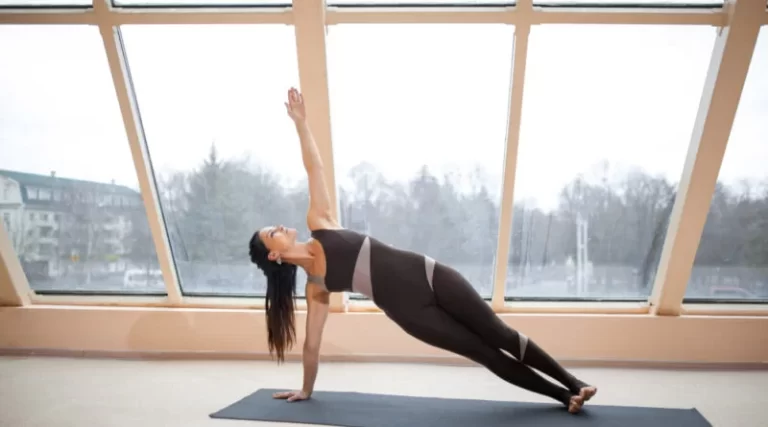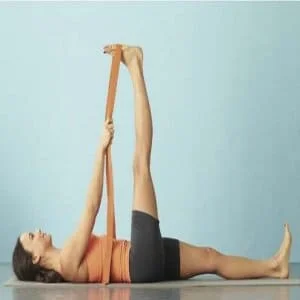Tittibhasana
What is Tittibhasana?
Tittibhasana is an arm-balancing pose that requires strength and endurance. The word from the Sanskrit Tittibha, meaning “Fly” or “insect,” and asana, meaning “pose.”
Tittibhasana is a progressive level arm balance posture that requires strong core muscles, and flexible hamstrings. Firefly Pose forms part of the Ashtanga Primary Series and the practice of the same teaches pupils to create awareness, balance, and strength in the overall body and mind.
How to do Tittibhasana?
- To Begin with, downward facing pose (adho mukha svanasana)
- Extend the legs beyond your hip’s width and hands placed to the ground floor in among the legs.
- Then lifting your butts off the floor, sit on your feet.
- Walk your hands behind your heels getting the shoulders in contact with your inner knees.
- Clutching the elbows inwards sit back on that elbow shelf, relaxing your buttocks in among the elbows.
- Balancing the weight on your hands walk your toes forward and lift the feet off the ground floor.
- Inhale and straighten the legs forward moving the sitting bones behind and rolling the thighs together.
- Look forward with toes pointing up and thighs embracing the upper arms.
- Extend the leg as far as possible opening them to the ceiling.
- Maintain the posture for at least fifteen seconds breathing gently.
- Exhale turning your knees and getting your feet to the floor.
- Sit down on your butts releasing the shoulders from after the heels, and rest.
Tittibhasana Pose Video
Benifites of Tittibhasana
Accomplishing this exercise energizes your chakra, thus furnishing growing your mind with emotional and self-control.
The body weight is concentrated on the arms and pressurizes the muscles of the shoulders, and wrists.
This improves muscle persistence thereby creating them more powerful.
Tittibhasana delivers the back torso and internal groins a good stretch.
It tightens and tones the area of the abdomen.
This mindful practice helps in gaining an overall sense of balance and even obtains calm to the mind.
This pose helps to open the groin region, stretches the upper back, and builds upper body strength.
The whole body is lifted off the balance against gravity.
Modifications and Variations
As with most asana postures, there are paths to create it more affordable while you are learning it and to deepen the pose once you evolve professionally.
Require a Modification?
If you can lift your feet off of the ground floor but can’t straighten your legs, try crossing the feet at the ankles in front of you. This is Arm Pressure Posture (Bhujapidasana). It even supports you obtain the feel for how strongly you require to hug your arms with your legs in both poses.
Up for a Challenge?
Once you have your arms and legs straight, you can start to work on a small deviation in the posture. Shift your weight back, taking the forward slant out of your torso and getting it into a more erect position. Your legs will come along for the ride as your toes start to point toward the ceiling. It brings a lot of core power here not to tip back and end up sitting on your butt.
Contraindications
- Carpal tunnel syndrome (medial nerve compression) and similar repetitious stress injuries
- Acute Sacro-lumbar strain
- Hernia
- Pregnancy
Conclusion
It is without a doubt that Tittibhasana is quite a difficult asana. To get this posture, you require to create self-confidence, and ability and be determined. Tittibha means firefly and is regarded to be an excellent analogy used to show the path to emanate yogic awakening. Therefore, with so much information in hand, you can start accomplishing this asana instantly.
The reality is that very few individuals exist who can lift to perform this asana perfectly the very first time. If taken excessively seriously, then this posture is likely to throw even the most talented practitioner off guard. It inculcates as well as needs both Shraddha and Vriya to accomplish it perfectly.
FAQ
1. What is the meaning of Tittibhasana?
Tittibhasana is an arm-balancing pose that requires strength and endurance. The term from the Sanskrit Tittibha means “fly” or “insect,” and asana, means “pose” or “posture”. To enter this posture, squat with the feet a little less than shoulder-width apart. Incline the pelvis forward so the torso is among the legs.
2. What are the benefits of Titibhasana?
This pose strengthens the wrists, forearms, shoulders, hip flexors, and core muscles. It gives a stretch for the hamstrings, adductors, and outer hips. Practicing it will help enhance your sense of balance.
3. What are the precautions of Tittibhasana?
Please avoid this pose if you have any wrist, shoulder, and lower back injuries. It is even not recommended to practice Firefly Pose during Pregnancy (post-surgery). Individuals with low blood pressure should avoid this pose as well.
4. What is adhomukha Tittibhasana?
Start the Asana with Adho Mukha Svanasana. Currently, step towards your hands with the end goal that your feet are before your hands. At that point, let your hands via your legs, and press them behind the calves, with the end goal that you slither further through your legs.
5. What are the steps to firefly?
Incline your chest forward and carefully lower your legs onto the backs of your upper arms. Inhale, lift your claws off the mat, and straighten your legs. Your feet can be pointed or flexed. Hold the pose for fifteen seconds longer, then release your feet to the floor with an exhale.







